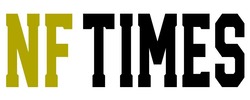You need to make sure that you are well-informed when making important decisions regarding your health insurance. In 2024, it is crucial to select a health insurance plan that suits your needs and provides sufficient coverage. By considering factors such as the type of policy, coverage and premium, age-limit, network hospitals, co-pay amount, waiting-period, and add-ons, you can make an informed choice that will benefit you and your family in the long run. This guide will help you navigate through the process of choosing the best health insurance plan for 2024.
Key Takeaways:
- Type of Policy: Consider individual, family floater, or senior citizen plans to cover medical expenses for you or your family members.
- Coverage and Premium: Evaluate suitable coverage and premium amount, taking into account the sum assured and duration of coverage.
- Age-Limit: Choose a policy with a higher age limit for coverage to avoid complications at an older age.
- Network Hospitals: Opt for a plan with a list of network hospitals for cashless treatment options.
- Co-pay Amount and Waiting-Period: Compare plans based on co-pay percentages and waiting periods before filing claims for settlement.

Factors to Consider When Choosing a Health Insurance Plan
Type of Policy
One of the first decisions you need to make when selecting a health insurance plan is the type of policy that suits your needs. Whether it is an individual, family floater, or senior citizen plan, each type of policy offers different coverage options for you or your loved ones. Once you have determined the type of policy you require, you can compare various health insurance policies offered by different providers to find the best fit for your needs.
Coverage and Premium
While comparing health insurance plans, it is crucial to evaluate the coverage and premium aspects of each plan. You need to consider the duration of coverage and the sum assured to determine the right plan for you. Choosing a plan that offers adequate coverage and a premium amount that fits your budget is crucial for your financial security and peace of mind.
Age-Limit
Type of policy has a maximum age limit, and this factor is crucial to consider while comparing health insurance plans. The age limit varies across different plans, and opting for a policy that provides coverage up to a higher age can be beneficial, especially as medical emergencies become more common with age.
Network Hospitals
Network hospitals play a significant role in your health insurance plan, as they offer cashless treatment options upon hospitalization. It is crucial to compare health insurance policies based on their list of network hospitals to ensure you have easy access to quality healthcare facilities when needed.
Co-Pay Amount
Clearly understanding the co-pay amount of a health insurance plan is crucial when comparing different policies. The co-pay amount is the percentage of medical expenses you need to pay, and it is important to consider this factor while selecting a plan that aligns with your financial capabilities and requirements.
Waiting-Period
The waiting period of a health insurance policy is another crucial factor to consider during the comparison process. Different plans have varying waiting periods before you can file a claim for settlement, so it is crucial to be aware of this aspect when making your decision.
Add-Ons
Some health insurance policies offer add-ons that provide additional flexibility and customization options for your coverage. Considering these add-ons while comparing plans can help you select a policy that can adapt to your changing healthcare needs over time.
Steps to Determine the Best Health Insurance Plan for 2024
Assess Your Health Needs
Insurance policies come in various types, such as individual, family floater, or senior citizen plans, each catering to different health needs. Consider your current health status and any potential medical requirements for you or your family members. Compare health insurance policies based on the type of coverage they offer to ensure it meets your specific health needs.
Evaluate Your Budget
Plan your budget by evaluating the coverage and premium of different health insurance plans. Calculate the sum assured you require and the corresponding premium amount you can afford. Take into account the co-pay amount and waiting period of each plan to determine the financial implications. Consider policies with suitable coverage that align with your budget constraints.
Consider Future Medical Needs
For instance, factor in your future medical needs when comparing health insurance policies. Take note of the age limit up to which each policy provides coverage, as medical emergencies are more common in older age. Choose a policy that extends coverage to a higher age to avoid the hassle of purchasing a new plan in the future.
Review Policy Limits and Exclusions
On top of everything, review the policy limits and exclusions of each health insurance plan. Understand the network of hospitals covered by the policy, as cashless treatment is only applicable at those facilities. Be aware of any waiting periods before you can file a claim and the percentage of medical expenses you need to co-pay. This information will help you select a plan that best suits your healthcare needs.
Seek Recommendations from Healthcare Providers
Steps your healthcare providers might suggest are worth considering while choosing a health insurance plan. Their insights into your health and medical history can help guide you towards a policy that offers comprehensive coverage tailored to your unique healthcare needs.
To wrap up
When selecting the best health insurance plan for 2024, consider factors like policy type, coverage, premium, age limit, hospitals, co-pay, waiting period, and add-ons. Decide if you need an individual, family, or senior citizen plan, compare options, ensure coverage meets your needs, check maximum age limit, hospital network, co-pay, waiting period, and add-ons for customization. Make an informed decision by comparing policies and features to choose a plan that suits your health and finances. Invest in your well-being by researching and comparing options, prioritizing comprehensive coverage and flexibility for changing health needs. Choose a plan that provides peace of mind and adapts to your health requirements.
FAQ
Q: What are the different types of health insurance policies available for 2024?
A: The standard health insurance plans for 2024 include individual, family floater, and senior citizen plans. These policies can cover medical expenses for you or your family members based on the policy terms.
Q: How can I determine the suitable coverage and premium for a health insurance plan?
A: To determine the appropriate coverage and premium for a health insurance plan, it is important to evaluate the sum assured that you require and consider the stipulated duration of coverage. This groundwork helps in comparing health insurance plans effectively.
Q: What is the significance of the age-limit factor when comparing health insurance policies?
A: Health insurance policies have a maximum age limit for coverage of medical expenses. It is advisable to choose a policy that extends coverage up to a higher age as medical emergencies are more common at older ages, making it challenging to purchase a new plan.
Q: Why is it important to consider the network hospitals when comparing health insurance policies?
A: Network hospitals play a significant role in health insurance plans as they offer cashless treatment upon hospitalization. It is beneficial to select an insurer with easily accessible hospitals within their network list to utilize this facility.
Q: What are the key factors to look at in terms of add-ons when comparing health insurance policies?
A: When comparing health insurance policies, it is crucial to assess the add-ons offered by different providers. Having a customizable plan with add-on options is beneficial as individual health needs can change over time, ensuring flexibility in coverage.
